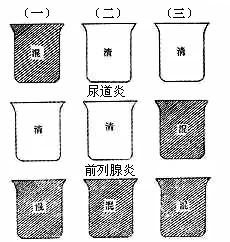| disease | Nonspecific Urethritis |
Nonspecific urethritis is a type of urethritis and is a common disease.
bubble_chart Etiology
The most common pathogens of non-specific urethritis are large intestine bacilli, streptococci, and staphylococci. In addition to pathogenic bacteria, there are many predisposing factors for the occurrence of non-specific urethritis, mainly including: ① Obstruction at the urethral orifice or within the urethra, such as phimosis, urethral stricture, stones, tumors, etc., which hinder the discharge of urine. ② Infections of the urogenital system, such as prostatitis, vaginitis, cervicitis, etc. ③ Mechanical irritation within the urethra, such as indwelling catheters, the use of urethral instruments, masturbation, etc. Women are more prone to urethritis due to their shorter urethra and frequent contact of the urethral orifice with vaginal secretions.
bubble_chart Clinical Manifestations
The acute phase is primarily characterized by a burning pain in the urethra, especially during urination, with purulent discharge from the urethra and initially cloudy urine. It generally does not cause systemic symptoms, but sometimes symptoms such as frequent urination and urgency may occur.
The diagnosis of urethritis is primarily based on medical history and examination of urethral discharge. Male patients can use the three-glass test to determine the location of urethritis (Figure 1). Patients with chronic urethritis need to undergo prostate tuina fluid examination. If necessary, urethroscopy or bladderoscopy can be performed to observe the condition of the posterior urethra. Female patients need to undergo gynecological examination to determine the presence of vaginitis, cervicitis, and other conditions.

Bladder and urinary tract infections
Figure 1: Three-glass urine test
bubble_chart Treatment Measures
The treatment during the acute phase primarily involves encouraging the patient to drink more water to increase urine output, which helps flush the urethra, and applying antibacterial drugs to reduce inflammation.
In addition to the aforementioned treatments, chronic urethritis requires supplementary urethral flushing and washing therapy, commonly using 1/1000 silver nitrate solution or 0.5~1% neomycin solution. For chronic posterior urethritis, 1% silver nitrate solution can be applied to the posterior urethra via urethroscopy once or twice a week. If prostatitis is present, corresponding treatment should be administered.





